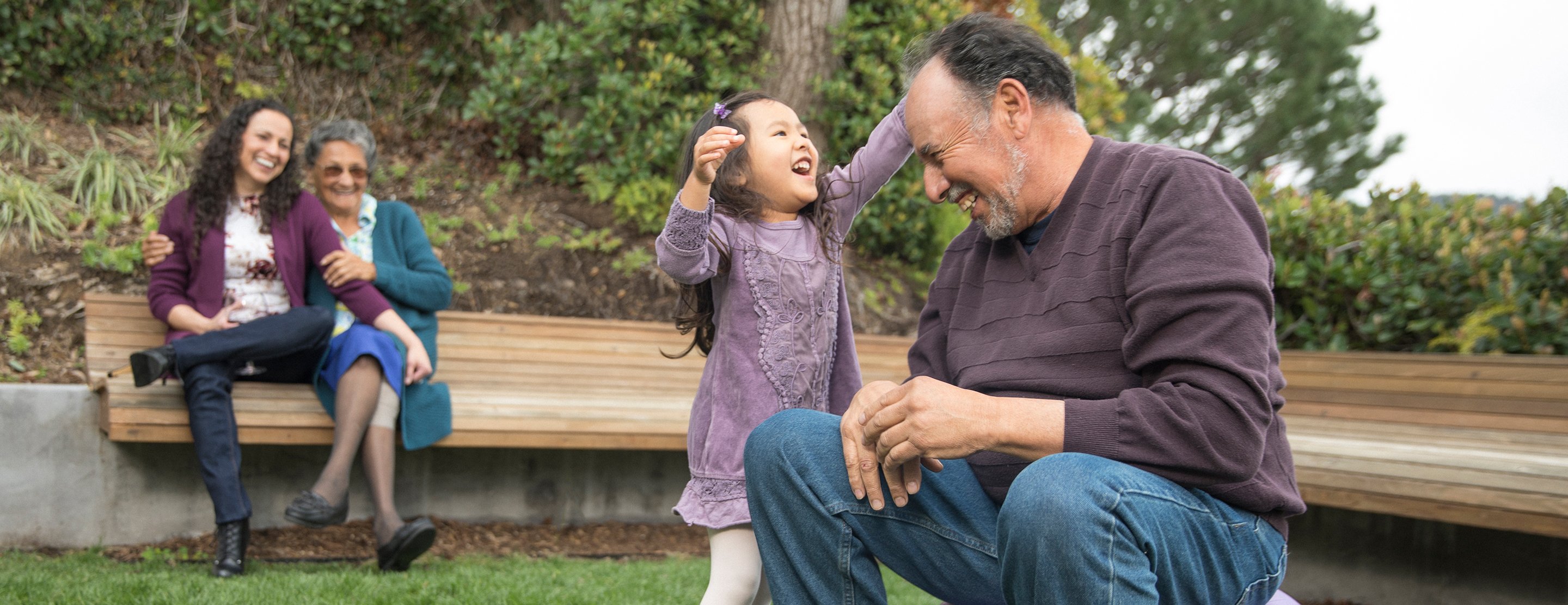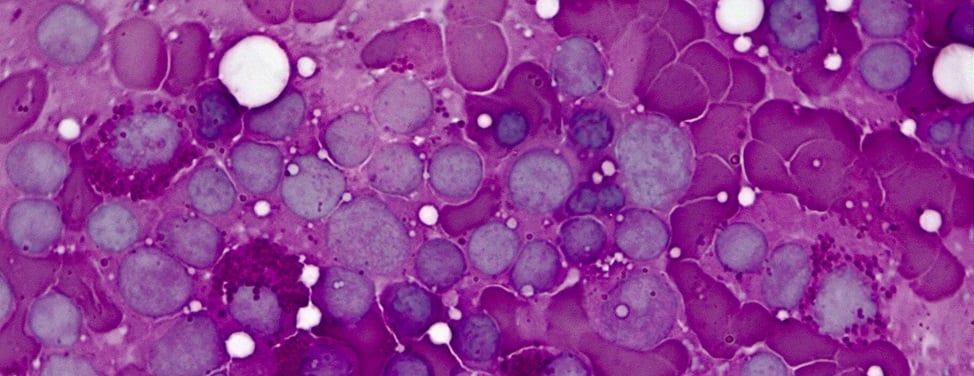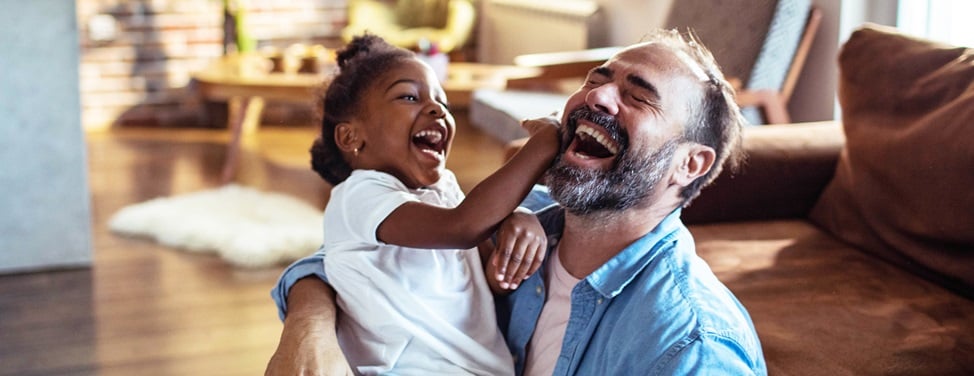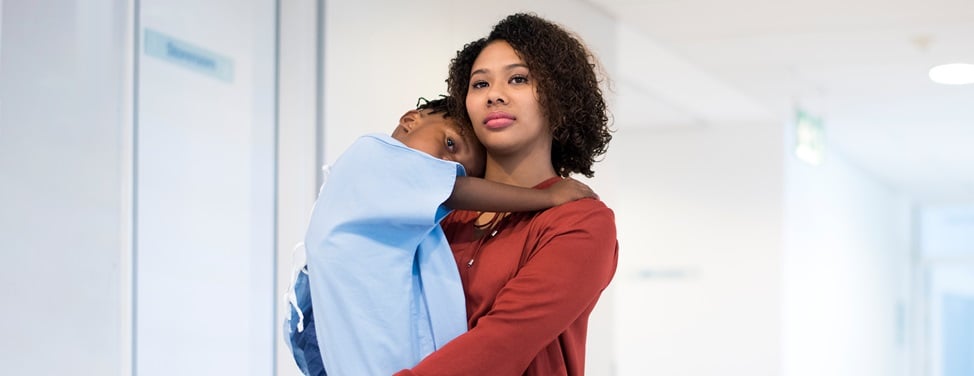- Optimal Donors -- Identical Tissue Typing
- Partially-Matched Donors
- Autologous Donors
- Alternative Donors
When a child is being considered for a bone marrow transplant, one of the first steps if to find out whether a family member is a suitable donor. This involves special blood studies on the patient and his or her entire family.
- The standard test is called tissue typing, also referred to as human leukocyte antigen (HLA) or histocompatibility typing.
- A second test, which has recently been developed, is called high resolution DNA typing.
These tests gauge how much the donor and recipient cells will recognize one another as the same or different. The greater the differences in the HLA typing, the greater the chance that either the donor's cells will not grow in the recipient — resulting in rejection or graft failure, or they will attack the recipient and cause a reaction called graft-versus-host disease (GvHD).
Optimal Donors — Identical Tissue Typing
The optimal donor is a histocompatible (HLA) matched relative who is usually a sibling or, in rare cases, a parent or grandparent with identical HLA tissue typing. Everyone inherits two sets of chromosomes containing HLA genes, four genes per set. One set comes from their father and one from their mother, for a total of eight genes. There is a one in four, or 25 percent, chance that any brother or sister will have inherited the same two sets of HLA genes as the patient. For a parent to be "matched" with his or her child, both parents must by chance have some HLA genes in common with each other. It is very unlikely, about a one in a million chance, for two unrelated individuals to have the same HLA genes in common, and there is only a one in 200 chance that a parent and child will be HLA matched.
Partially-Matched Donors
A biologic parent is always half matched, or haplocompatible, which means four out of eight HLA match, with his or her child since each child inherits half of the HLA genes from each parent. There is a 50 percent chance that any sibling will be haplocompatible with any other sibling.
In order for a haplocompatible bone marrow transplant to work without resulting in a fatal GvHD reaction, the stem cells must be specially treated after they are collected from the donor and before they are transplanted into the patient. This treatment depletes them of the donor T lymphocytes that cause GvHD.
There are advantages and disadvantages to T cell depletion. The technique that is used at the UCSF Benioff Children's Hospital BMT Program significantly reduces the risk of GvHD both in terms of its chances of occurring, as well as its severity if it does occur.
However, there is an added risk that the marrow might not engraft. In order to improve the chances for successful engraftment, additional treatment with radiation and chemotherapy must be added to the conditioning regimen in most cases. This is not done with children who have severe combined immunodeficiency disease (SCID).
Also, there may be a delay in the recovery of the immune system, or the body's defense against infection, resulting in a higher risk of infections after transplant. T cell depleted bone marrow stem cells from a parent, sibling or other close relative may be considered for children who do not have an HLA-matched related or unrelated donor.
For more information about this special program at UCSF Benioff Children's Hospital, please see Haplocompatible Donor Program.
Autologous Donors
For some types of cancers, it is possible to use the patient's own marrow stem cells either from the bone marrow or peripheral blood for the transplant. This is called an autologous transplant. This is a possibility with the following cancers:
- Brain tumors
- Neuroblastoma
- Lymphomas
- Sarcomas
- Wilms' tumor
- Primitive neuroectodermal tumors (PNET)
If autologous bone marrow stem cells are going to be used, a portion of the patient's marrow is harvested prior to admission for the transplant. This can take place either a few days to many months before the transplant. The harvesting is done in the operating room under general anesthesia and the stems cells are frozen in liquid nitrogen in the Pediatric Blood and Marrow Transplant Program Laboratory.
Prior to freezing, the marrow may need to be treated to remove cancer cells that may still be present. Following the conditioning period, the stored marrow is thawed and transfused into the patient. While one advantage to this type of transplant is the absence of GvHD, a potential disadvantage is the greater risk that the cancer will recur.
If possible, peripheral blood stem cells are used instead of bone marrow for autologous transplants. Prior to admission for the transplant, the patient's stem cells are collected using a special process called leukapheresis. During this procedure the patient's blood is passed through a machine that collects the portion of white cells containing bone marrow stem cells. The remaining white cells, red cells and platelets are given back to the patient.
Placement of a special intravenous line, called a double lumen pheresis catheter, may be necessary for this procedure. In preparation for the leukapheresis, the patient receives a drug or called granulocyte colony stimulating factor (G-CSF) for three to four days to encourage stem cells to leave the marrow and enter the blood.
Occasionally, after many cycles of chemotherapy and/or local radiation therapy, G-CSF is inadequate to mobilize a sufficient number of bone marrow stem cells into the blood. We are currently evaluating a new approach using a combination of cytokines. Preliminary results are promising.
Alternative Donors
Unfortunately, the majority — or more than 70 percent — of children with diseases that could be cured with a bone marrow transplant will not have a matched related donor, the optimal donor for most transplants. For this reason, we have developed several clinical programs at UCSF to evaluate the benefit of using alternative donors when an optimal donor cannot be found. The three alternative donor programs are the following:
- Unrelated Donors — When a related donor cannot be found and there is time to conduct a search, an alternative is to identify unrelated, healthy individuals who are histocompatible with the patient and are willing to donate bone marrow stem cells.
- Umbilical Cord Blood — If a matched unrelated marrow stem cell donor is unavailable, another source of unrelated donor bone marrow stem cells that may be considered is umbilical cord blood (UCB). There are over three-dozen UCB registries worldwide which process and store cord blood collections from healthy babies. The cord blood, which is normally thrown away after a baby is born, contains a relatively large number of bone marrow stem cells. One potential advantage of using cord blood is that it does not need to be a perfect tissue match with the recipient. Disadvantages include the limited number of cells in a collection and relative delay in the recovery of marrow function post-transplant.
- Haplocompatible Donors — As explained above, a biologic parent is always half matched, or haplocompatible, which means four out of eight HLA match, with his or her child since each child inherits half of the HLA genes from each parent. There is a 50 percent chance that any sibling will be haplocompatible with any other sibling.
The question often is asked as to whether a relative other than a sibling can be used as an HLA-matched donor for BMT. There is a very small chance, about one percent, that a parent may be closely matched with his or her child and can be used in the same manner as a matched sibling. In general, the chances that a sufficiently matched relative such as a cousin, uncle or grandparent will be found are so rare that the time and energy required usually do not warrant a search. However, under some circumstances, for example among certain ethnic groups or when the parents' families are related, it may be worth a careful extended family search. This will be addressed during the initial consultation.

































